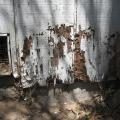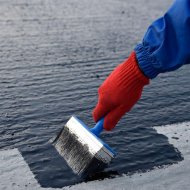How Do You Install RV Plumbing?
The RV plumbing system is a real game changer for all camping and hiking lovers.
Providing running water and an easy way to flush the toilet after usage can make you feel at home anywhere you go to explore nature, the abroad landmarks and the solitude as a peaceful experience for soul healing.
The RV is also great if you’re doing some property renovation and you temporarily need to vacate the premises and have a place to stay.
If you can acquire such a luxurious feature in your camper or any other vehicle, don’t hesitate to read our today’s material. Within it, we will provide you with the easiest top-to-bottom RV plumbing installation guide ever.
How Does RV Plumbing Work?
When utilising a city water outlet, the plumbing system in an RV functions similarly to that of a common living space, whether a small apartment or a 3-bedroom house.
Yet, it’s good to know that there are notable distinctions in terms of where the water enters and exits the system that runs through the RV mechanism.
Of course, when not connected to a concrete water source, one might wonder where the water pressure originates. While classical home use water or flush the toilet in a traditional home, when you use or flush the toilet, you don't care where the water comes from.
In the RV system, things are entirely different as RV plumping on mandatory needs to be connected to a concrete water supply. Most RV tools are accompanied by freshwater systems that use the onboard water supply or a tank where to store water.
Hence, when there’s no more water preserve, you are supposed to find a new source to connect to. What’s the most typical for the RV system is that the 12V pump allows the flow of water all the time and the toilet to flush when needed.
Essential Parts of Your RV Plumbing System
The mechanism of work we’ve explained above in the previous lines needs several critical elements to be put into force and run faultlessly.
Here’s the list of them.
Water Pump
The 12-volt water pump allows the pressure control management of the entire plumbing system.
You can activate it by unlocking the faucet or the flashing WC mechanism. It’s when the water pump enables the drawing of the water via the RV plumbing system – starting from the tank full of freshwater and ending in the faucet or the toilet.
Normally, this water is generally cold or at least cool. An extra line brings water to the water heater’s tank. Within this tank, the water has been warming up constantly to keep enough warm water when needed.
Water Heater
The water heater itself can be one of these: Atwood or a Suburban. The Atwood alternative is equipped with an aluminium tank that’s almost 100% protected from the biggest risk of RV system breakage –corrosion.
The S Suburban water heater, meanwhile, is produced from enamelled steel. To protect it from corrosion, you must install an extra element – an anode rod that consists of magnesium and provides solid enough protection.
Fixtures
You might find them identical to the fixtures from your ordinary home plumbing system. In addition, there are many options and designs of showerheads, faucets and other useful accessories to add.
The most significant thing here is to create a solid enough connection between the fixture and the pipe.
When the pipe is out of order, it’s more challenging to make a complete RV plumbing system repair, which is why it’s better to invest time and effort in keeping the fixtures functioning for a reliable connection with the pipe.
Besides, changing the fixture would be much easier.
RV Toilet Plumbing
The most common RV systems come with a connection between the toilet and the freshwater tank. This connection provides the right water flow when flushing or drawing.
Basically, once you flush the water, it goes to another tank called by plumbers a “black” or a “wastewater” tank. You will find this tank right under the toilet seat. You can easily dismantle it to empty it in concrete areas (where it’s allowed to do so).
For this purpose, you should get the sewer hose and link it to the RV end. Then, simply open the valve of the wastewater tank so the excess water can go through via the sewer hose right to the drain.
Gray Water Tank
This extra tank in the RB plumbing system is where the water from the sink or the shower drain goes to.
All water, except the one flushed from the toilet, is directed to this grey water tank. Note that it’s always in this nuance; you won’t mistake it. It’s essential to empty it regularly – better together with the wastewater tank.
Water Pressure Regulator
Many might wonder if a water pressure regulator is necessary for their RV plumbing system. Well, by all means, it’s quite important. This importance increases when connecting the RV system to a city water supply.
The plumbing system isn’t projected to withstand the high water pressure typical for the city’s water supply source. But meanwhile, RV producers say you should not allow a higher than 40-50 psi water pressure rate.
When this number is exceeded, the RV system might damage in a way, so only professional plumbers can help you out with the fixture.
Can You Replace Your RV Plumbing Fixtures?
We’ve mentioned that replacing the fixture rather than a pipe in the RV plumbing system is easier. Indeed, this is the easier repairing job when it comes to an RV water supply.
By the way, even if you don’t have some spare fixtures in your DIY RV plumbing system kit, there’s no problem with using a domestic plumbing fixture.
When you stop the water flow, remove the broken faucet by preliminary getting rid of the rubber washers to simplify the entire process. Use a crescent wrench for the purpose.
Then, simply adjust the new faucet and return the rubber washers to their primary positions. With a wrench, you can fit them tightly.
How Can You Access Your RV Plumbing?
Depending on your RV plumbing system model, you can access them from the inside or outside. Your manual will tell you the concrete direction and the approach to reaching concrete elements inside the system.
Usually, such access is necessary to make a regular check of the pipes. It’s essential to make such checks before a long trip and when you have doubts about the average water flow pressure or the regular work of the RV system.
Conclusion
Installing an RV plumbing system is not the easiest chore to handle. Professional plumbing services might be the better option if you are a novice in the camper lifestyle.
Having a buddy with more experience at hand is also a good and budget-friendly idea to provide your adventurous vehicle with constant hot and cool running water and a way to flush the toilet.
More to Read:
Previous Posts:








